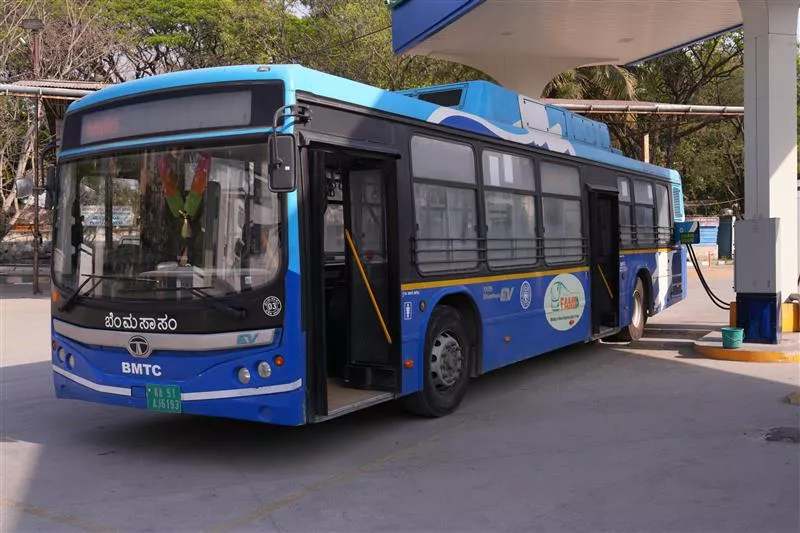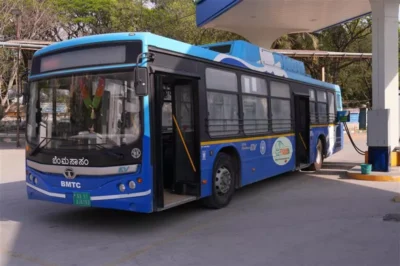
Introduction to the PM E-Drive Scheme
In a significant move towards sustainable urban mobility, the Indian government has launched the PM Electric Drive Revolution in Innovative Vehicle Enhancement (PM E-DRIVE) scheme. With an ambitious budget of ₹10,900 crore, this initiative aims to accelerate the adoption of electric vehicles (EVs) across the country. The scheme is set to replace the previous FAME (Faster Adoption and Manufacturing of Hybrid and Electric Vehicles) program and will run for two years, from April 2024 to March 2026.
Allocation of E-Buses to Major Cities
Under the PM E-DRIVE scheme, the government has allocated a substantial number of electric buses to nine major cities with populations exceeding 40 lakh. The total allocation stands at 14,028 e-buses, with the following distribution:
- Bengaluru: Approximately 4,500 e-buses
- Delhi: 2,800 e-buses
- Hyderabad: 2,000 e-buses
- Ahmedabad: 1,000 e-buses
- Surat: 600 e-buses
- Mumbai, Kolkata, Chennai, Pune: Remaining allocation shared among these cities
This distribution underscores the government’s commitment to enhancing public transportation infrastructure in urban centres.
Objectives of the Scheme
The primary objectives of the PM E-DRIVE scheme are:
- Reduction of Urban Pollution: By replacing conventional diesel buses with electric ones, the scheme aims to significantly cut down on greenhouse gas emissions and improve air quality in cities.
- Promotion of Sustainable Mobility: Encouraging the adoption of EVs aligns with the global shift towards sustainable transportation solutions.
- Boost to the EV Ecosystem: The scheme is expected to stimulate the domestic EV manufacturing sector, creating jobs and fostering innovation.
- Enhanced Public Transport: The introduction of modern electric buses will improve the efficiency and reliability of public transport systems.
Implementation and Oversight
The implementation of the PM E-DRIVE scheme will be overseen by the Ministry of Heavy Industries in collaboration with state transport undertakings and public transport agencies. The procurement and deployment of e-buses will be carried out in phases, with an emphasis on meeting the specific needs of each city.
Infrastructure Development
To support the operation of electric buses, the government plans to establish a robust charging infrastructure. The scheme includes provisions for setting up over 72,000 charging stations across cities and highways, addressing concerns related to “range anxiety” among EV users. This infrastructure development is crucial for the seamless integration of electric buses into the existing public transport network.
Private Sector Participation
While the scheme primarily focuses on public sector deployment, there is a growing recognition of the role of private operators in scaling up electric mobility. However, as noted in discussions, the current subsidy framework predominantly benefits state-run entities, potentially limiting the involvement of private bus operators. Expanding the incentive structure to include private players could accelerate the transition to electric buses and foster a more competitive EV market.
Challenges and Considerations
The successful implementation of the PM E-DRIVE scheme faces several challenges:
- Infrastructure Readiness: The establishment of charging stations and maintenance facilities must keep pace with the deployment of electric buses.
- Financial Sustainability: Ensuring the long-term financial viability of electric bus operations is essential, including considerations for operational costs and revenue generation.
- Public Awareness and Acceptance: Educating the public about the benefits of electric buses and addressing any apprehensions regarding their performance and reliability.
Conclusion
The allocation of 14,028 electric buses under the PM E-DRIVE scheme marks a significant step towards transforming urban transportation in India. By focusing on sustainability, pollution reduction, and infrastructure development, the scheme aligns with the country’s broader goals of achieving net-zero emissions and fostering a green economy. The success of this initiative will depend on effective implementation, collaboration between public and private sectors, and active participation from all stakeholders.









































Leave a Reply